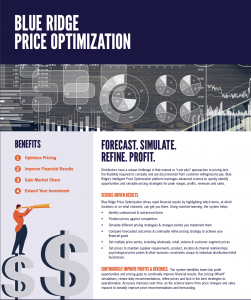Great List of Retail Tips: AI, Delivery, CX, Returns, Pricing and More
 What's on your retail business's list of 'fires to put out in 2020'? Let me guess... Things like when and how to use AI in retail, reducing returns, making CX more human, smarter pricing, transportation cost reduction, ya-da, ya-da, ya-da... Am I in the ballpark?
What's on your retail business's list of 'fires to put out in 2020'? Let me guess... Things like when and how to use AI in retail, reducing returns, making CX more human, smarter pricing, transportation cost reduction, ya-da, ya-da, ya-da... Am I in the ballpark?
A few weeks ago, Total Retail published their list of 50 Best Retail Tips of 2019 to help retail businesses maximize sales and profits. They built the list from retail and supply chain thought leaders' perspectives in Q4.
Some of their retail tips were obvious; most were not. A pretty decent list, IMO.
The article had quite a few interesting nuggets, so I thought it would be fun to share. Whether you are in retail, distribution or manufacturing, there's useful info in here; I encourage you to check out the full 16-page report. If you're short on time though, no worries. I-gotch-choo! Here are my highlights:
- Brick-and-Mortar: YES, a consistent customer experience is important. But pay attention to individual store locations (competition, willingness-to-pay, etc.) and build your pricing strategy accordingly.
- Social Responsibility: Show Millennials you care. Take a clear stand on important social and political issues in your marketing efforts.
- Inventory Management: While ordering less frequently can help businesses trim transportation costs, it can also have unintended consequences on inventory levels. Building these costs into forecasting models can help businesses optimize order frequency based on transit costs as well as CX and service-line needs, resulting in higher profits. Learn more about retail inventory software.
- BOPIS / In-Store Pickup: Keep it at the front of your store - preferably within 30 feet of the store entrance. Research shows in-store pickup use with shoppers older than 55 drops 75% when pickup desks are at the back of the store.
- Pricing Strategy: When upselling, make sure the item you are trying to upsell is no more than 25% higher than the original price. It's unlikely anyone will pay any more than that on the spot.
- Returns: A return policy is as much a marketing tool as a retail necessity. Set clear expectations to put shoppers at ease during the decision-making process. Also keep in mind, the #1 reason for returns is incorrect size and/or fit. So investing in sizing technology is a good idea especially for e-commerce retail businesses.
- Shipping: If you're shipping internationally, be on the lookout for surcharges related to tariffs and inflation that occur with cross-border processing, brokerage fees, and additional insurance fees. A strategy to consolidate shipping or even demand planning software solutions should be near the top of this year's priority list.
- Social Marketing: No one wants a desired item to run out of stock. You can use ads to share real-time inventory information, and retarget shoppers who browsed your site for a particular item, to inform them how many are left in stock at their local store. This may boost sales and open up opportunities for cross-selling complementary items.
- Supply Chain: Run a pilot sales "stress test" to evaluate the efficiency of your fulfillment process. This allows you to identify and address areas for improvement in a low-risk context. External factors that impact inventory flow, such as weather patterns, seasonality, etc., can be tracked using supply chain analytics to prevent costly mistakes.
- Technology: AI technology can be used in the retail supply chain to automate tasks that take employees away from personal customer interactions. That could include anything from supply planning and demand forecasting to demand shaping through data-driven Price Optimization technology. Using AI technology for work where human touch is not required will significantly free up time for higher-value activities because areas of the business that used to be siloed are now becoming one. Whether you are on the technology side or the business side, there are no sides. It's one thing now.



Comments are closed.